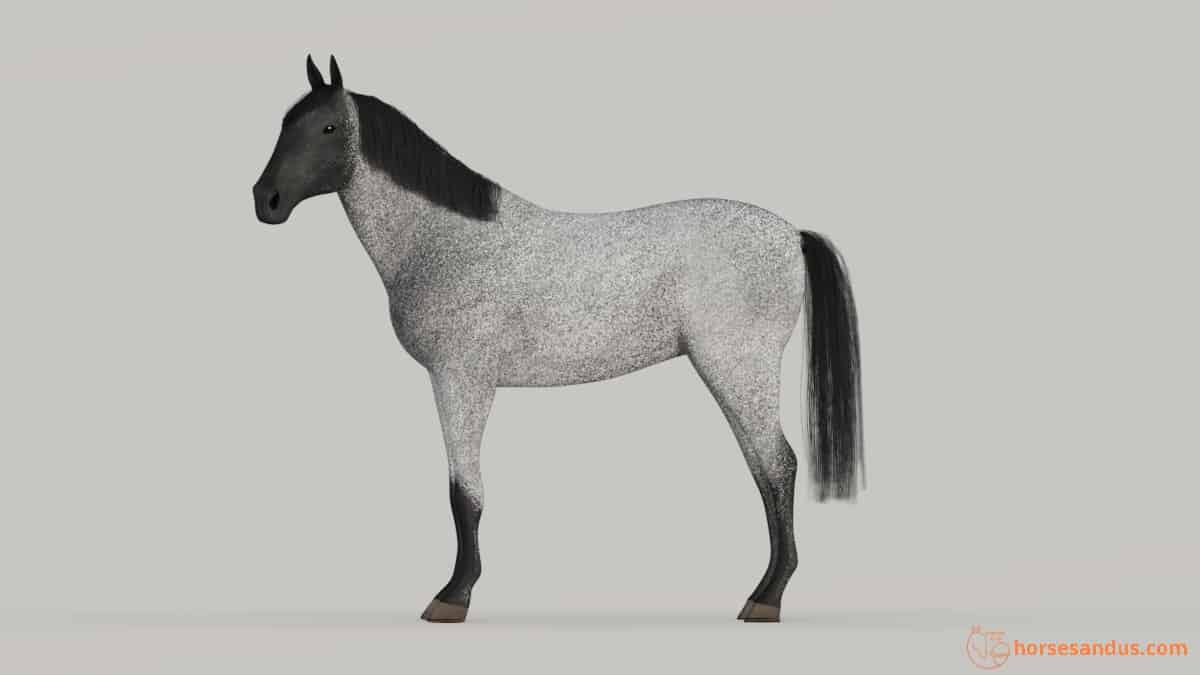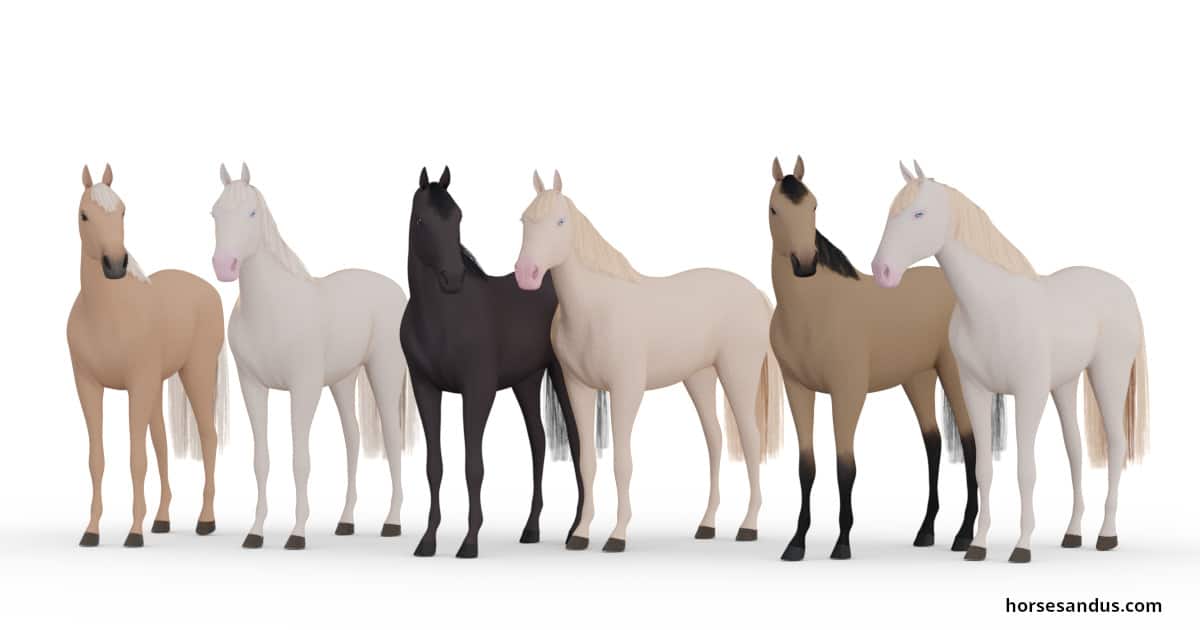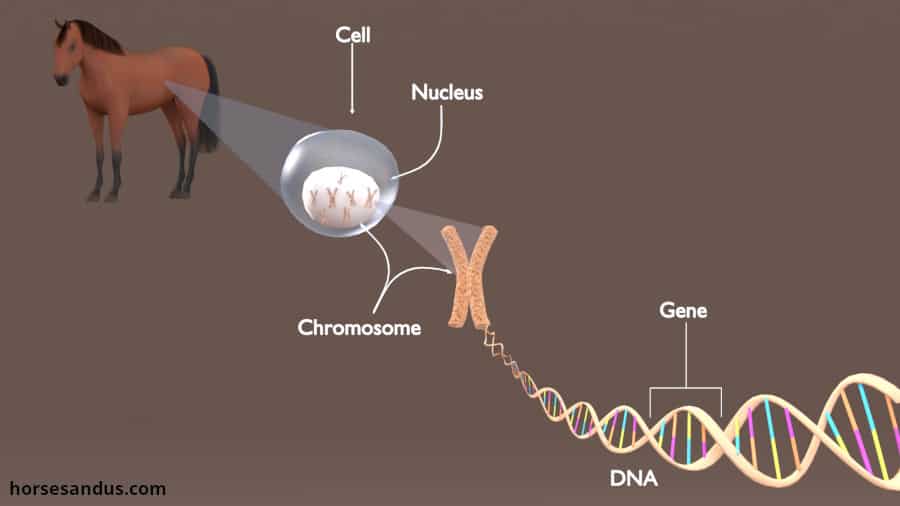Leopard Complex patterns, also called Appaloosa patterns, are distinct patterns that share the same genetic basis. These patterns are typically centered over the hips, with mottled skin, white sclera, and striped hooves. However, they are incredibly diverse, ranging from a solid color horse with only a few white dots to a near-complete white horse.
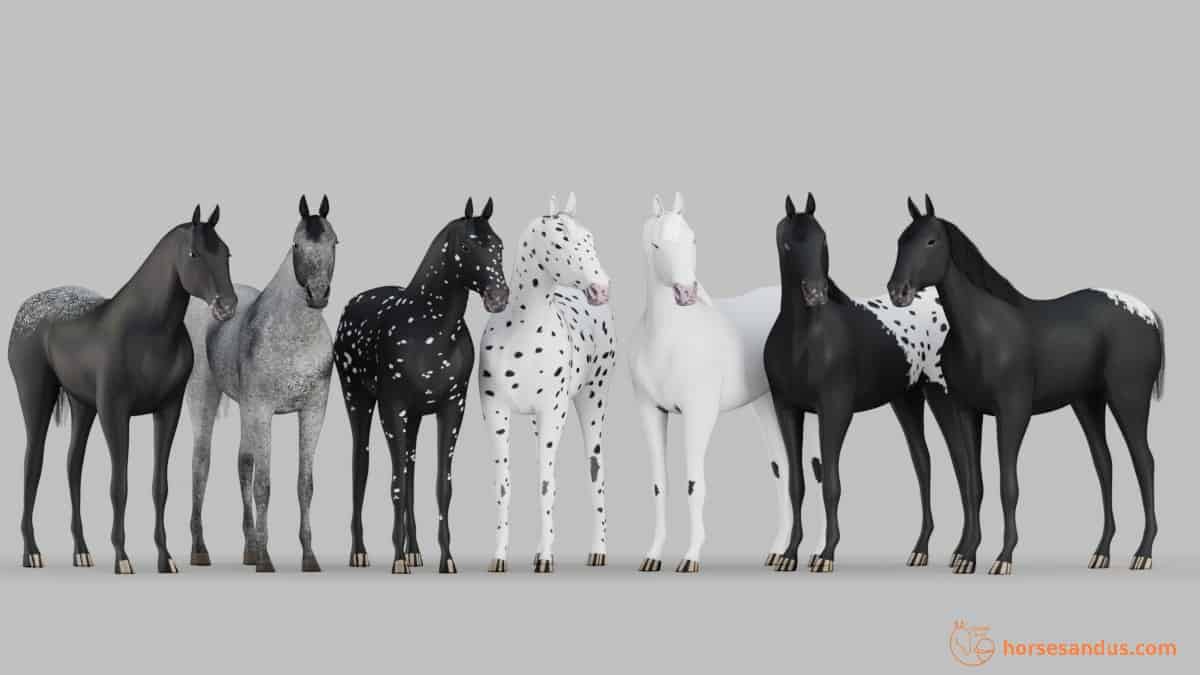
The Leopard Complex has several distinct basic patterns: spotted blanket, snowcap blanket, leopard, few-spot leopard, varnish roan, snowflake, frosted and mottled. These patterns can occur in isolation, but it is also common for horses to have combinations of two or more of the basic patterns within the Leopard Complex group.
The Leopard complex is named after the Leopard pattern, characterized by a white coat with colored spots over the entire body, resembling a Dalmatian.
There is a wide variety of horse coat colors and patterns. In this article, we will look at the patterns produced by the Leopard Complex gene.
Leopard Complex Pattern Is Appaloosa Pattern
Sometimes the Leopard complex pattern is also called the Appaloosa pattern, named after the Appaloosa breed, which has this pattern as a standard.
However, the Leopard Complex pattern far predates this breed. Actually, this pattern existed a long time before the domestication of horses. In fact, horses with Leopard spots were depicted in Cave paintings from 25,000 years ago.
The Leopard Complex Patterns
The Leopard Complex patterns are composed of 3 basic building blocks:
- White pattern
- Leopard spots
- Roaning or snowflake
The variation in the amount of these three components leads to the different variety of leopard complex patterns.
The following table describes the interaction of the 3 components, which leads to various patterns, from minimal expression to maximal expression.
| Pattern | Amount of White (%) | Leopard Spots | Extent of Roaning | Extent of Snowflakes |
|---|---|---|---|---|
| Mottled | absent | absent | minimal | minimal |
| Varnish Roan | absent | absent or rare | moderate to maximal | minimal |
| Frosted | minimal | minimal | moderate | minimal |
| Snowflake | minimal | minimal | minimal to moderate | moderate to maximal |
| Spotted Blanket | 20-60 | present | moderate | variable |
| Snowcap Blanket | 20-60 | absent | moderate | variable |
| Near Leopard | 60-80 | present | variable | variable |
| Near Few Spot Leopard | 60-80 | absent | variable | variable |
| Leopard | 80-100 | present | variable | variable |
| Few Spot Leopard | 80-100 | absent | variable | variable |
These patterns can occur in isolation, but it is also common for horses to combine two or more of the basic patterns within the Leopard Complex group.
Following we will see in more detail the 8 main patterns from the Leopard Complex group:
1. Mottled LP Pattern
The Mottled Pattern is a Solid color with only the leopard pattern “characteristics”:
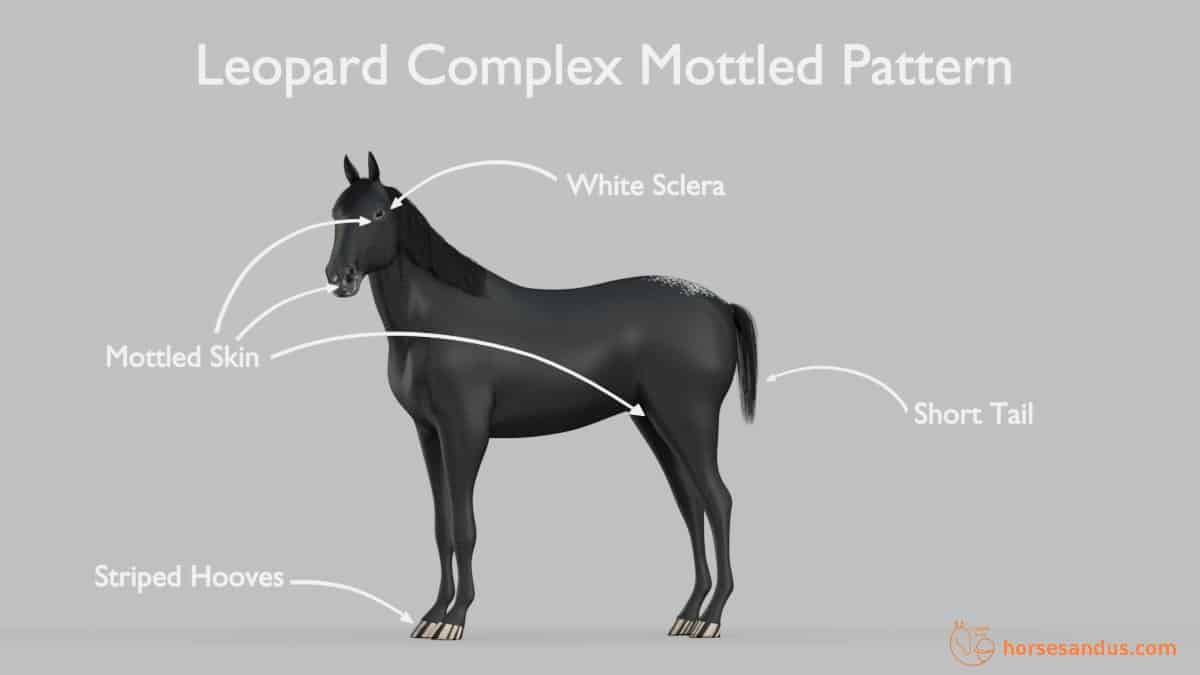
- Mottled skin (skin with patches or dots. On pink skin, the dots are pigmented, and on colored skin, the dots are white or pink).
- White sclera.
- Striped hooves Vertical bands of pigment on unpigmented hooves.
This trio of characteristics occurs on most horses with Leopard Complex Patterns. However, these characteristics may sometimes also occur in horses without Leopard Complex Patterns, and so in these cases, they can be misleading.
As the horse ages, it will present a progressive roaning (depigmentation of hairs intermixed with colored hairs)
2. Varnish Roan LP Pattern
The Varnish Roan pattern, also called “marble,” is the most basic possible Leopard Complex pattern and is easily recognizable.
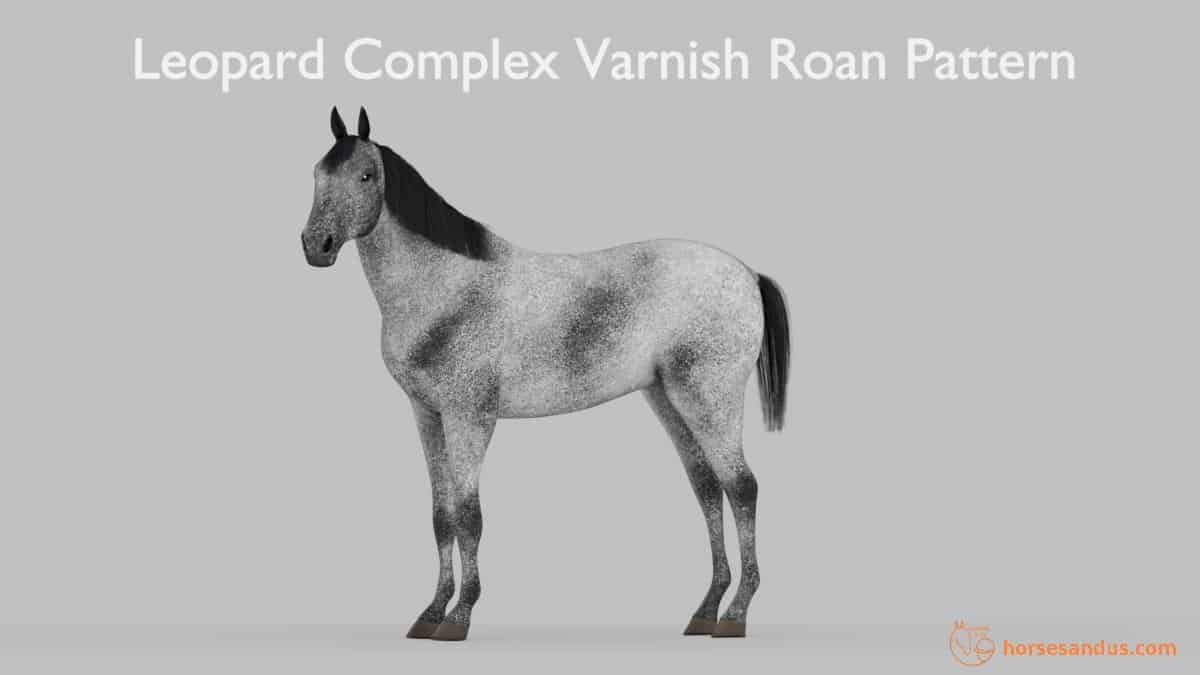
The roan progressively appears as the horse ages. However, the areas with prominent bones, like some parts of the face, knees, hips, stifle will remain colored throughout the horse’s life.
This pattern should not be confused with true roan, which is not progressive and is evenly spread throughout the body, excluding the head and lower legs.
A pale “varnish roan” can be confused with a “few spot leopard”, but “varnish roans” have darker areas where the bones are prominent, while the “few spot leopard” have darker areas in the flank and behind the elbows.
3. Frosted LP Pattern
The frosted pattern resembles the small white ice crystals of frost, hence the name.
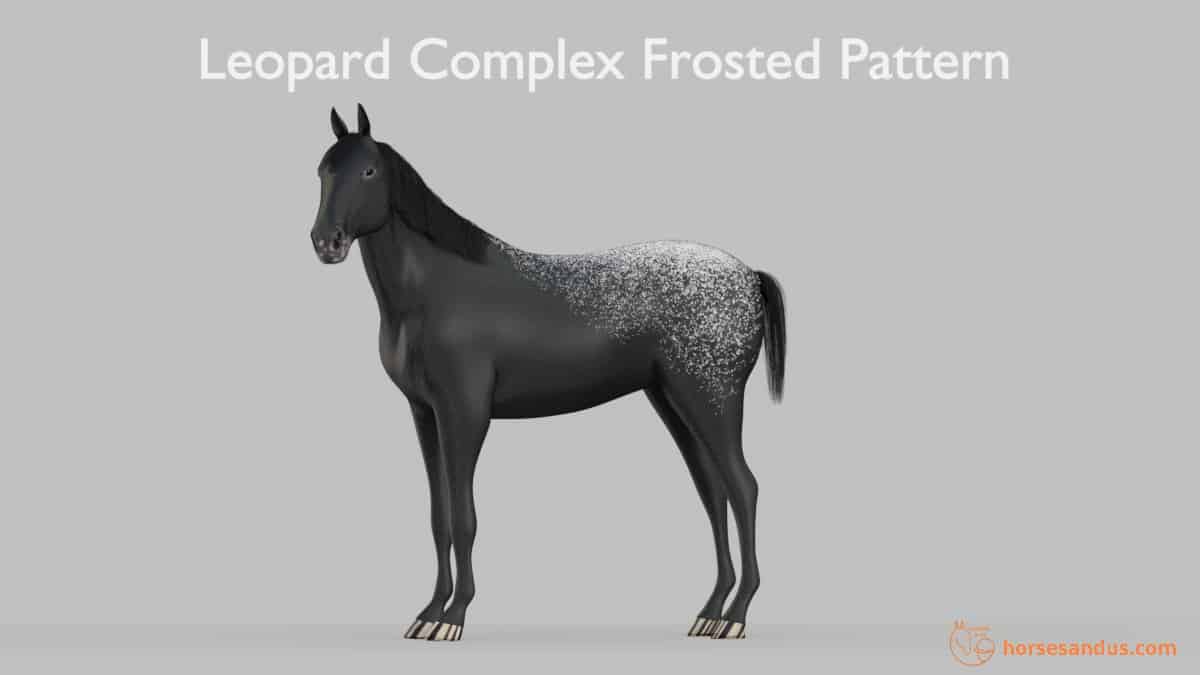
The horse has a solid color with a blanket of roaned area over the croup that can extend to the withers.
This pattern can either exist at birth or it can develop as the horse ages.
4. Snowflake LP Pattern
The Snowflake pattern resembles snowflakes scattered over the body of the horse, hence the name.
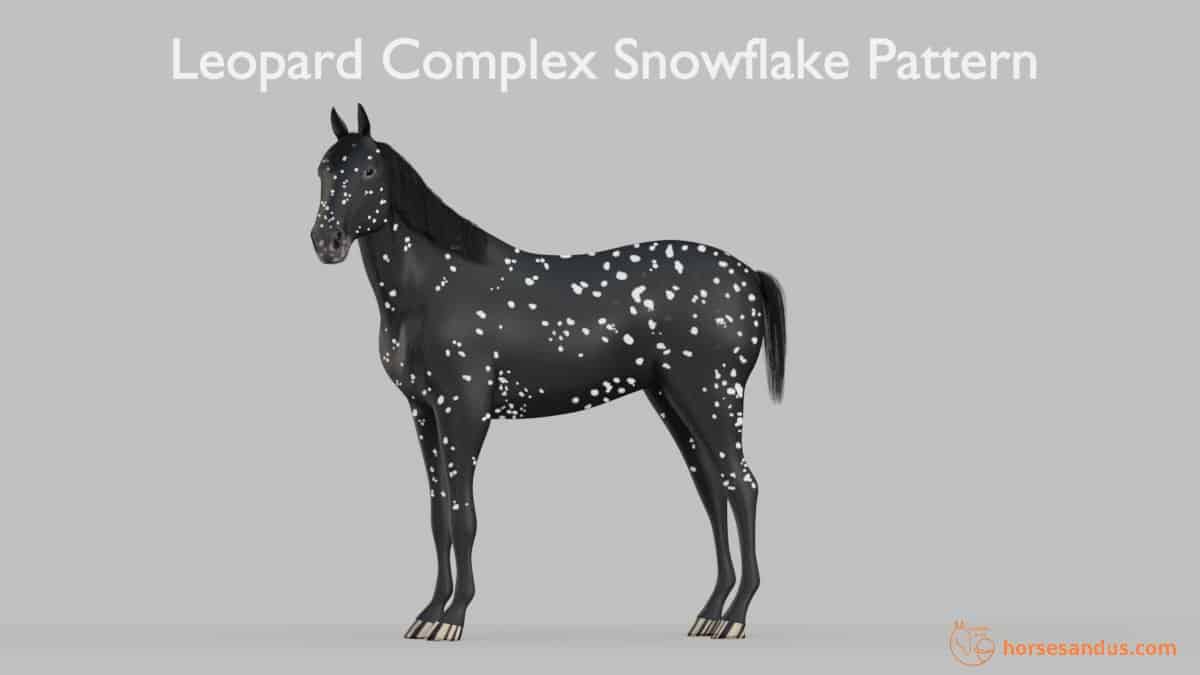
This pattern is quite rare and is characterized by small white patches placed over the coat’s solid color. When these patches are more extensive, they can merge with each other and form larger patches.
5. Spotted Blanket LP Pattern
The Spotted Blanket pattern resembles a white blanket with colored spots lying over the horse.
The blanket can have discrete edges, roan edges, or speckled edges (where small white spots extend into the colored area of the coat). The solid-colored areas usually become roan with age, although this may be minimal.
The extension of the blanket varies from a minimal area over the hips to a more extensive area that reaches the withers. When the Spotted blanket is very extensive, it progresses into the Near Leopard and then Leopard pattern.
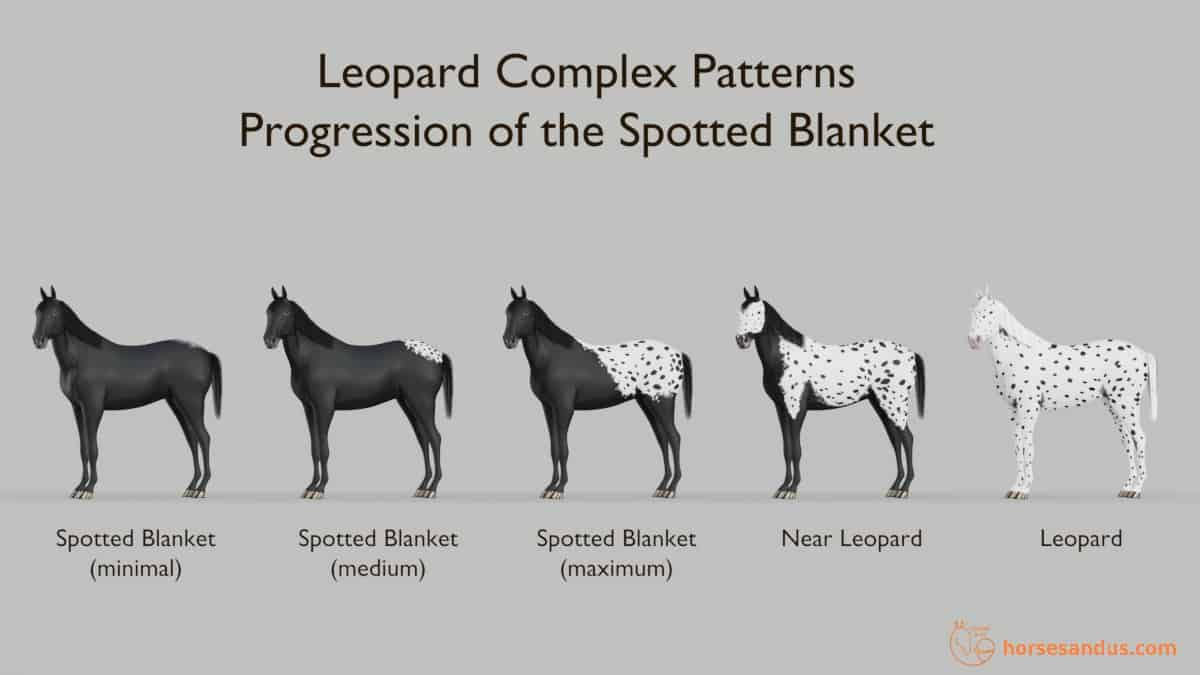
6. Snowcap Blanket LP pattern
The Snowcap blanket pattern resembles a white blanket lying over the horse.
This pattern does not have leopard spots, it is just a clean white area over a colored coat.
The blanket can have discrete edges, roan edges, or speckled edges (where small white spots extend into the colored area of the coat). The solid-colored areas usually become roan with age, although this may be minimal.
The extension of the blanket varies from a minimal area over the hips to a more extensive area that reaches the withers. When the snowcap blanket is very extensive, it progresses into the Near Few Spot Leopard and then Few Spot Leopard patterns.
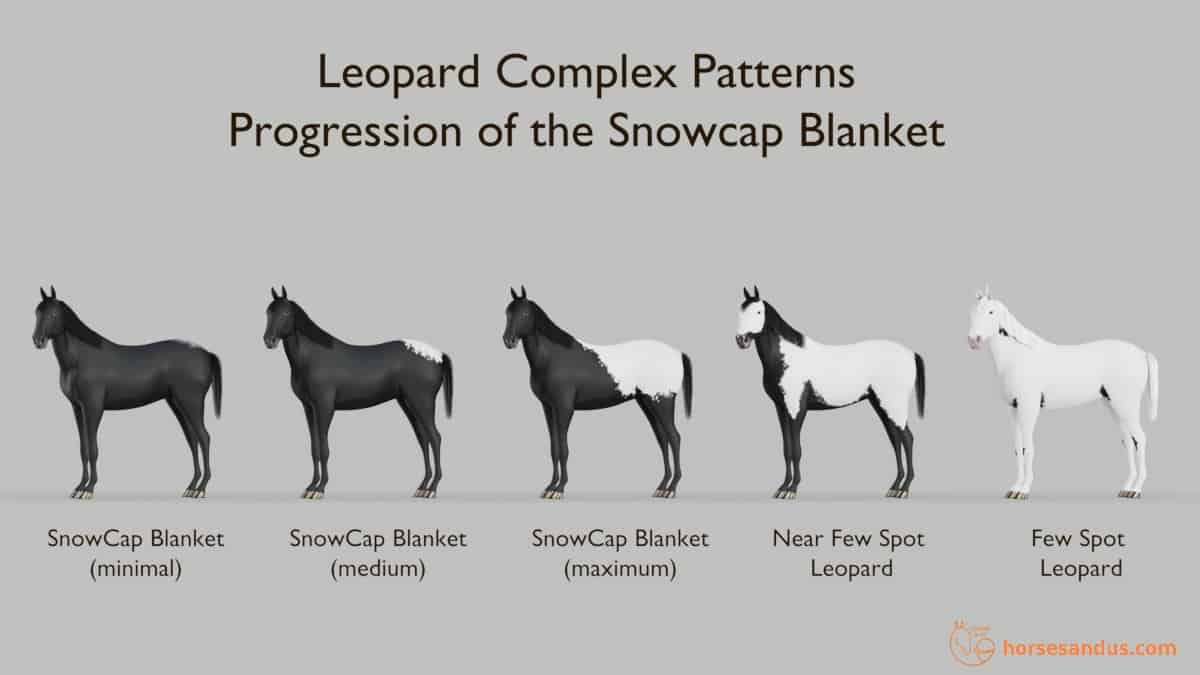
7. Leopard LP Pattern
The Leopard pattern gives the name to the Leopard Complex.
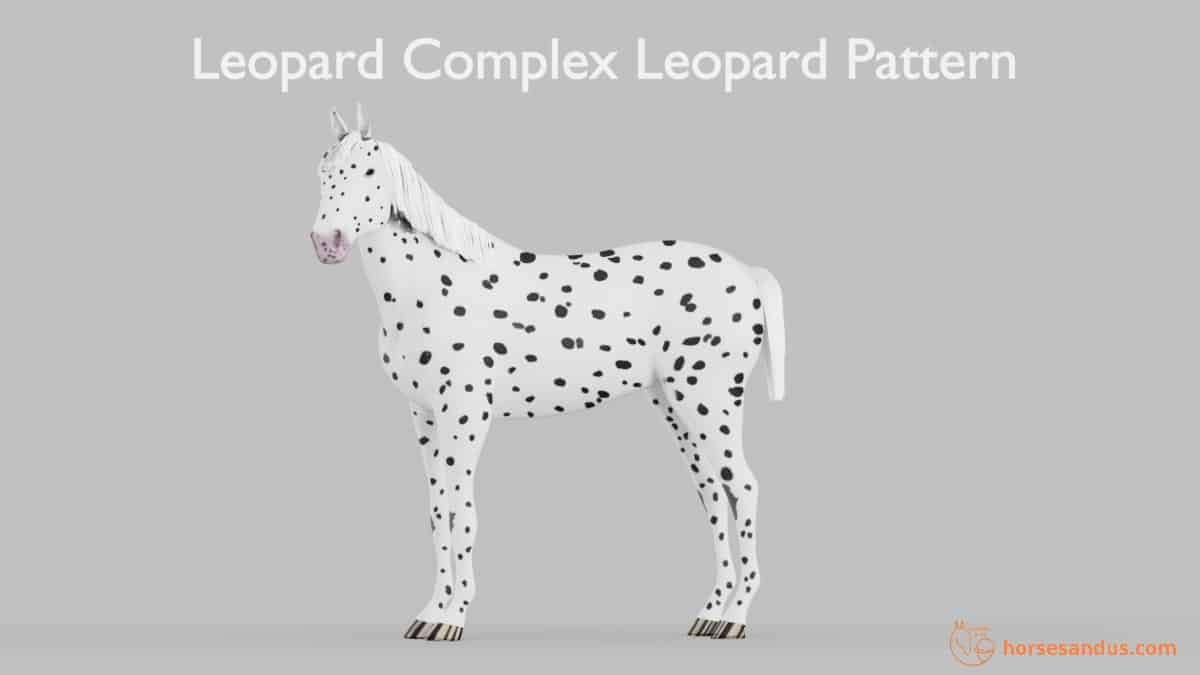
This pattern is characterized by a white coat with colored spots of varying sizes, evenly distributed over the body, similar to dalmations. The spots are present since birth.
The spots can be more concentrated on the head and the legs. When the spots are oval, they seem to spread out from the flank. When they are round, they are not spread out in any specific way.
Sometimes the more extensive forms of the spotted blanket pattern are often considered a leopard pattern and so the transition from “blanket” to “leopard” is not clear cut.
8. Few Spot Leopard LP Pattern
This pattern is the maximum expression of the Leopard Complex. It’s basically a leopard without spots.
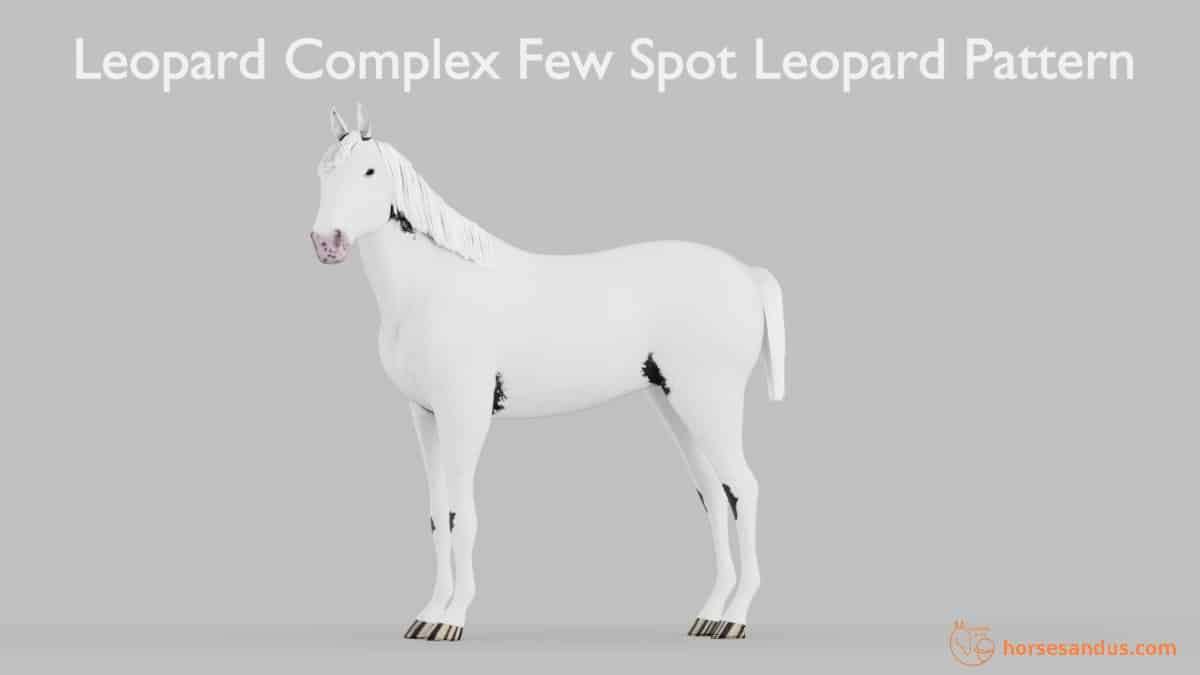
It is nearly all-white but retains color in the flanks, behind the elbow, under the neck, and usually has patches in the lower leg. Some leopard spots can be present but are very limited.
Varnish roaning can also be present.
When LP Patterns are Difficult to Identify
All the patterns above are quite easy to identify when each of them has full expression.
However, the identification can become more difficult at the borders of each group (the extensive blanket can be confused with leopard) or when different patterns are simultaneously expressed (for example, varnish roan + blanket + snowflake + leopard spots on the blanket).
However, most combinations include the blanket and so these cases are generally classified as blanket.
Variation of the Leopard Complex Patterns With Age
It is not unusual for Leopard patterns to change throughout the life of the horse.
Sometimes the foal will not display any leopard pattern or very minimal, with some specks on the croup, but then the pattern starts to change as the horse grows older.
This is common with varnish roan and snowflake patterns. But we can also see blanketed horses at a younger age evolve to a leopard pattern as they grow older.
Variation Of The Leopard Complex Pattern With The Base Color
Leopard complex can be combined with any of the three base colors. However, a study has been done to demonstrate an association of the base coat color with white percentage and the type of patterns.
Bay base color results in a smaller white area (average 32% ) and more extensive solid-colored areas. Bay horses show a tendency towards a spotted blanket pattern.
Black base color results in the leopard pattern with an extensive white area (average 70%) and big black leopard spots uniformly distributed across the horse´s body.
Chestnut base color results in fewer spots which are also smaller in size.
Variation Of The Leopard Complex Pattern With Gender
A study has found that male horses tend to have bigger and more uniform leopard spots than female horses.
This may be the result of breeding programs where selection favors stallions with extensive uniform black spotting.
The Genes Behind Leopard Complex Patterns
The genes that produce the different Leopard Complex patterns are: LP gene and its modifiers the PATN genes
- The symbol LP represents the Leopard Complex pattern. The lowercase symbol lp represents the absence of LP.
- The pattern modifier genes are represented by PATN. The absence of these genes is represented by n.
The Leopard Complex pattern is, in fact, complex because it consists of a vast collection of white patterns that result from different interactions of the Leopard Complex gene (LP) with pattern modifier (PATN) genes.
Let’s uncover what is behind the Leopard Complex pattern.
The Leopard Complex Gene (lP)
When LP is switched on, the Leopard characteristics will appear
- Mottled skin around the eyes, muzzle, and genitals.
- White sclera in the eye.
- Striped hooves.
- Varnish roan pattern, which is the most basic Leopard Complex pattern.
If the LP is switched off then we have a horse that is a solid color.
Of course, we can have other white patterns or dilutions, but these are produced by other genes which are unrelated to the Leopard Complex gene.
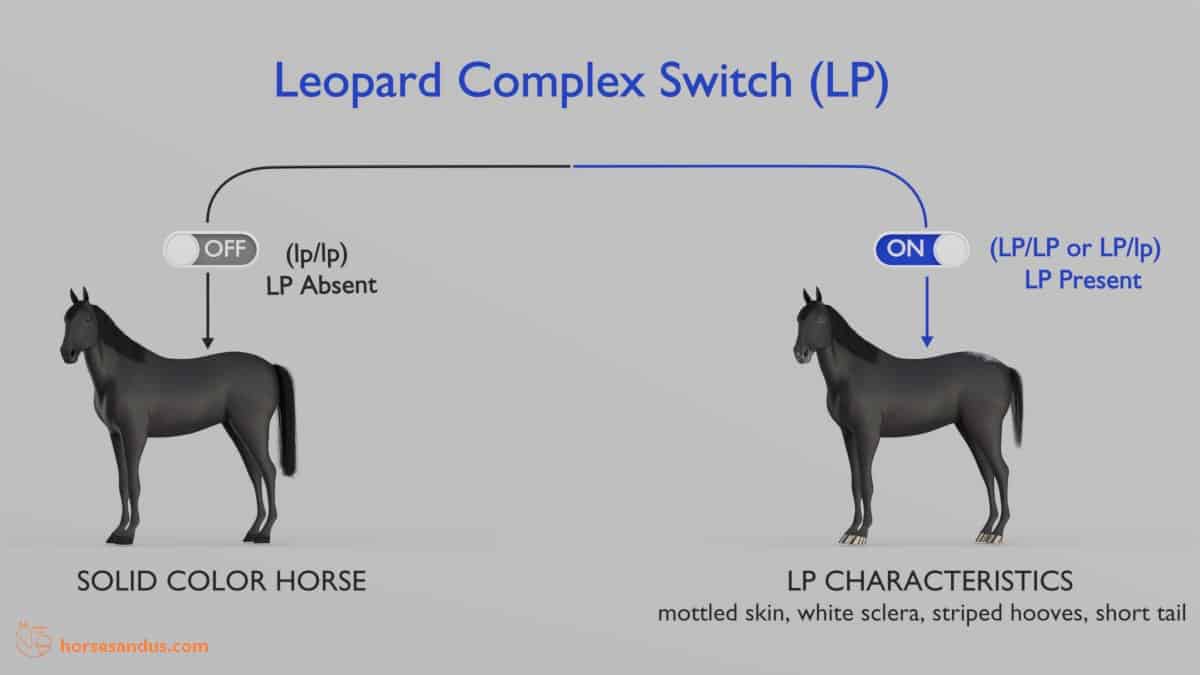
The LP on its own will only produce the basic leopard characteristics. To produce the variety of Leopard Complex patterns that exist, it needs to work together with the pattern modifier genes.
The Pattern Modifier Genes (PATN)
The Pattern Modifier genes (PATN) are responsible for the amount of white spotting that will appear on the horse´s coat.
It is currently believed that there is one major pattern modifier (PATN1) and several smaller modifiers (PATN2, PATN3,…).
The PATN1 gene has the greatest effect on the amount of white spotting, from large blankets to complete leopard and few spot Leopard.
The smaller modifiers, PATN2, PATN3, … have a smaller effect on the amount of white spotting, resulting in smaller blankets, and snowflaking. However, all these genes can be additive to each other, and thus in conjunction, can create a more extensive white pattern.
The PATN genes on their own (without the LP switched on) cannot produce any pattern, and we end up with a solid-colored horse.
The Interaction of LP and PATN Genes
While the PATN genes will influence the extent of white on the coat, the presence or absence of leopard spots is dependent on the LP gene. One LP allele will produce spots and two LP alleles will cause the absence of spots.
Actually, the spots are an absence of white. We can think of them as holes revealing the solid color underneath. That is why the spots are always the same color as the horse´s base color.
In summary, the full range of Leopard complex patterns can only be expressed with the combined action of both genes (LP and PATN ).
- LP only = leopard complex characteristics only
- PATN only = no characteristics and no white pattern.
- LP + PATN = leopard complex characteristics + white pattern
- LP/LP + PATN = very few or no leopard spots
- LP/lp + PATN = leopard spots
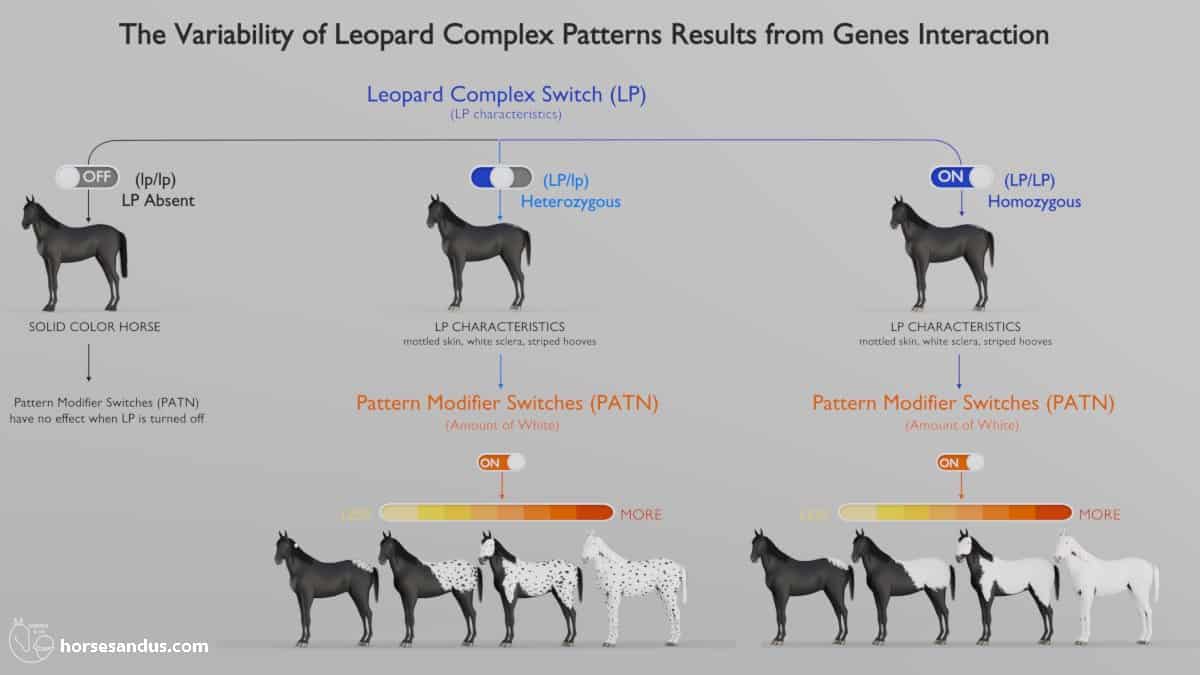
Health Issues Associated with Leopard Complex
The Leopard Complex (LP) is linked to the following ocular conditions.
Congenital Stationary Night Blindness(CSNB)
Horses homozygous for the LP gene have an ocular condition known as Congenital Stationary Night Blindness (CSNB).
This condition is characterized by night blindness. The horses have apparently normal vision in full light but a diminished vision in dim light conditions.
This condition only manifests in the homozygous state (LP/LP).
We can visually identify a homozygous horse if leopard spots are absent. However, sometimes a homozygous horse may have minimal or almost no white pattern, especially when it is young or if the PATN genes are not present.
In these cases, if you notice any signs like apprehension, confusion, and clumsiness (sometimes resulting in injury) under dim light conditions, then a DNA test should be performed to determine if night blindness exists. If the horse tests homozygous for LP, then we can be sure it has the condition.
After having identified this condition in your horse, you should protect it from getting hurt.
- Keep it in well-lit paddocks or stables.
- When in the pasture, keep it with other horses that may lead them.
- Special care should be taken when entering a dark barn or horse trailer.
Equine Recurrent Uveitis (eRU)
Horses homozygous for LP and PATN1 have an increased risk to develop Equine Recurrent Uveitis (ERU).
This disease is common (2% to 25% worldwide) and is the leading cause of blindness in horses.
ERU is an autoimmune condition characterized by recurrent episodes of ocular inflammation in the uveal tract of the eye. This chronic inflammation will cause damage to the ocular tissue, which can then lead to blindness.
Some History Behind the Leopard Complex Horses
Researchers have discovered that the Leopard Complex gene was already present in prehistoric horses.
According to research done on samples of prehistoric Eurasian horses, it was concluded that horses from that period were either black, bay or leopard spotted.
The Leopard spotted coat might have been the best camouflage in the ice age climate of that time. Eurasia was a snowy steppe habitat, and so a white horse with dark spots would be well adapted to this environment.
This coat pattern (white with leopard spots) is produced by the heterozygous form (LP/lp). This coat color’s advantage in the snowy steppe environment resulted in a natural selection for heterozygotes.
The homozygotes, on the other hand, would have been at the mercy of predators due to the night blindness associated with the homozygous state (LP/LP). That explains why no form of homozygous state was found in the prehistoric DNA samples.
These research findings are also consistent with prehistoric cave paintings dated back from 25,000 years ago.

“The Dappled Horses of Pech-Merle” in France clearly represents white horses with dark spots. But before research identified the existence of the LP gene in prehistoric DNA samples, it was thought that the spotting in the paintings was only an abstract and symbolic expression.
Breeds Where We Can Find The Leopard Complex Patterns
The LP pattern gene is very old and can be found in many breeds around the world, such as:
- From Europe
- Knabstruppers of Denmark
- Norikers of Austria
- British Spotted Pony
- From Asia
- Karabair
- Mongolian Altai
- From America
- Colorado Ranger
- Tiger Horse
- Miniature Horse
- Pony of the Americas
Last but not least, the Appaloosa Horse is the best-known breed for the Leopard Complex pattern.
Further Reading
If you would like to learn more about horse colors and white patterns, you may want to read the following books, available on amazon.
The links below that lead to products on Amazon are affiliate links and I earn a commission (with no additional cost for you) if you make a purchase.
The following books are an introduction to horse colors and white patterns which are full of images and very easy to understand.
The Equine Tapestry: An Introduction to Colors and Patterns The Ultimate Guide to Horse ColorsA more technical book about horse colors, but still very easy to understand.
Equine Color GeneticsSources
Article from https://journals.plos.org/
Genetic investigation of equine recurrent uveitis in Appaloosa horses
